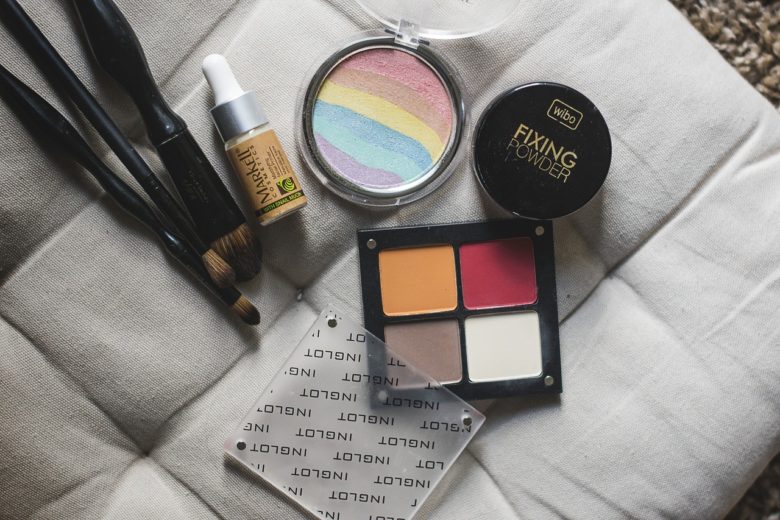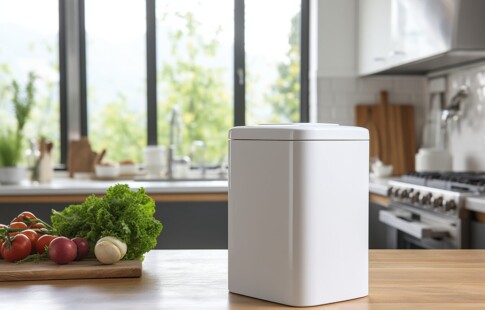
How to Identify Sustainable Beauty Products by Their Ingredients
We are reader-supported. When you buy through links on our site, we may earn affiliate commission.
This is the third of a five-post series looking into environmental issues with the beauty industry, areas it’s excelling in sustainability and where we can expect to see sustainability efforts improve in the future. You can find the previous post here.
Many people know that switching to sustainable beauty products helps the environment, but did you know it may improve your health as well?
As many of the chemicals typically used in cosmetic production have yet to undergo rigorous testing, no one truly knows the impact these synthetic substances may have on health. But we do know that the skin absorbs chemical additives like a sponge. So avoiding personal hygiene products laden with chemical additives and preservatives just makes sense.
Problems arise when trying to read product labels. Many natural ingredients may sound chemical in nature, and many synthetic ingredients sound less than scary. Here’s what to look for in the cosmetic aisle and what to avoid.
Keywords to Seek Out
Sometimes, ingredients that sound frightening really aren’t! Learning the scientific names for common natural beauty product ingredients can help you select products healthy for both your body and the planet.
Staring at a label containing Butyrospermum Parkii? While intimidating, you’re merely looking at shea butter, a common skin-softening ingredient used in moisturizers. Slather it on — some research indicates that shea butter contains anti-carcinogenic properties. Remember this handy ingredient by pronouncing the initial sounds, which sound like “beauty rose.”
Likewise, Melaleuca Alternifolia refers to tea tree oil, a killer anti-microbial and anti-fungal that gently alleviates acne. Argania Spinose means argon oil, an oil healthy enough to eat that also packs a moisturizing punch to hair and skin. Oleum Amygdalae sounds like a terrifying medical diagnosis but actually refers to almond oil, a superfood that boosts your beauty inside and out.
Even some ingredients most would swear were chemical in nature sound more frightening than they are. For example, the words “cetearyl alcohol” immediately evoke images of drying ethyl alcohol — but in reality, this alcohol acts as a moisturizer. And acetic acid refers to nothing spookier than apple cider vinegar, a substance used throughout the ages as a weight loss aid when taken internally and an exfoliating agent when applied topically.
Some natural ingredients require little interpretation. Algae, for example, refers to the mineral-rich gift from the sea proven to heal sun-damaged skin. Likewise, products containing charcoal pull impurities to the skin’s surface where they can be washed away.
Avoid These Ingredients
Knowing what to avoid in your toiletry products remains just as important as knowing what to look for. Strive to shun labels containing any of the following ingredients.
Palm oil cultivation leads to the destruction of the rainforest and has devastated the orangutan’s only natural habitat. Avoiding products that contain palm oil may help save this critically endangered species.
Plagued with dry, damaged hair? Eschew shampoos containing sodium lauryl sulfate. While SLS creates foamy bubbles, it also strips hair of essential oils — plus it kills marine life. Switch to SLS-free shampoos and pamper your hair with natural treatments such as a coconut and honey hair masks to restore luster.
Pass on exfoliating products containing plastic microspheres. Check the label for polyethylene or polypropylene. Current sewage treatments cannot filter these tiny beads, leading them to flow into the ocean where they poison marine life.
Headed off for a tropical vacation this winter? Skip sunscreens containing oxybenzone. Not only does this chemical destroy delicate coral reefs, but some studies also link the use of sunscreens containing oxybenzone to skin cancer. Stick to zinc-based sunscreens instead.Butylated hydroxyanisole and butylated hydroxytoluene (BHA and BHT), which are common preservative agents in many cosmetics, disrupt the endocrine system — the hormonal powerhouse that keeps your body in balance. Research indicates that BHA and BHT may also act as carcinogens to animals and human beings alike.
Labeling Tricks to Watch
Once you find sustainable products you love, sticking with them becomes simple! But we’ve all found ourselves in an unfamiliar store with brands we don’t recognize and little time to examine labels closely. Don’t worry — a few simple label logos can put your mind at ease that you’ve made the environmentally correct choice.
If you’re an animal lover, seek out products labeled with the Leaping Bunny. This label indicates that no animal testing took place during the manufacturing of the product. Likewise, search for products labeled as certified wildlife-friendly, as this label means the product’s manufacturers contribute directly to local communities to preserve their natural resources and culture.
Products which contain the Fairtrade label give people in developing regions the opportunity to improve their lives with equitable pay and benefits for their labor. Similarly, the FairWild label indicates that all wild materials used in production are harvested in ecologically sustainable ways.
Products awarded the NSF Sustainability Certified mark have undergone rigorous testing to ensure they comply with international sustainability standards. This prestigious logo only goes to products meeting the very highest ratings in environmental friendliness.
Finally, seek out products containing the certified organic label. This certification ensures no chemicals were used in cultivating any of the product’s ingredients nor added during the manufacturing process.
Start Small
Building a sustainable beauty repertoire takes time. Instead of dumping your entire cosmetics cubby and starting over, begin by finding one ecologically sound product you adore — such as a quality organic foundation — and build from there. Switching to planet-friendly products can make you feel good about your choices, and feeling great about yourself always makes your natural beauty shine through!
Share on
Like what you read? Join other Environment.co readers!
Get the latest updates on our planet by subscribing to the Environment.co newsletter!
About the author
Jane Marsh
Starting from an early age, Jane Marsh loved all animals and became a budding environmentalist. Now, Jane works as the Editor-in-Chief of Environment.co where she covers topics related to climate policy, renewable energy, the food industry, and more.





